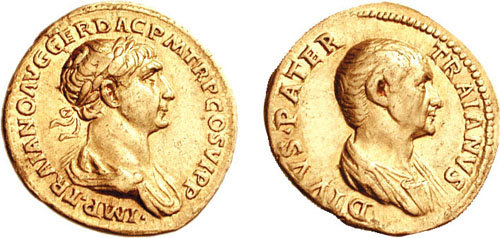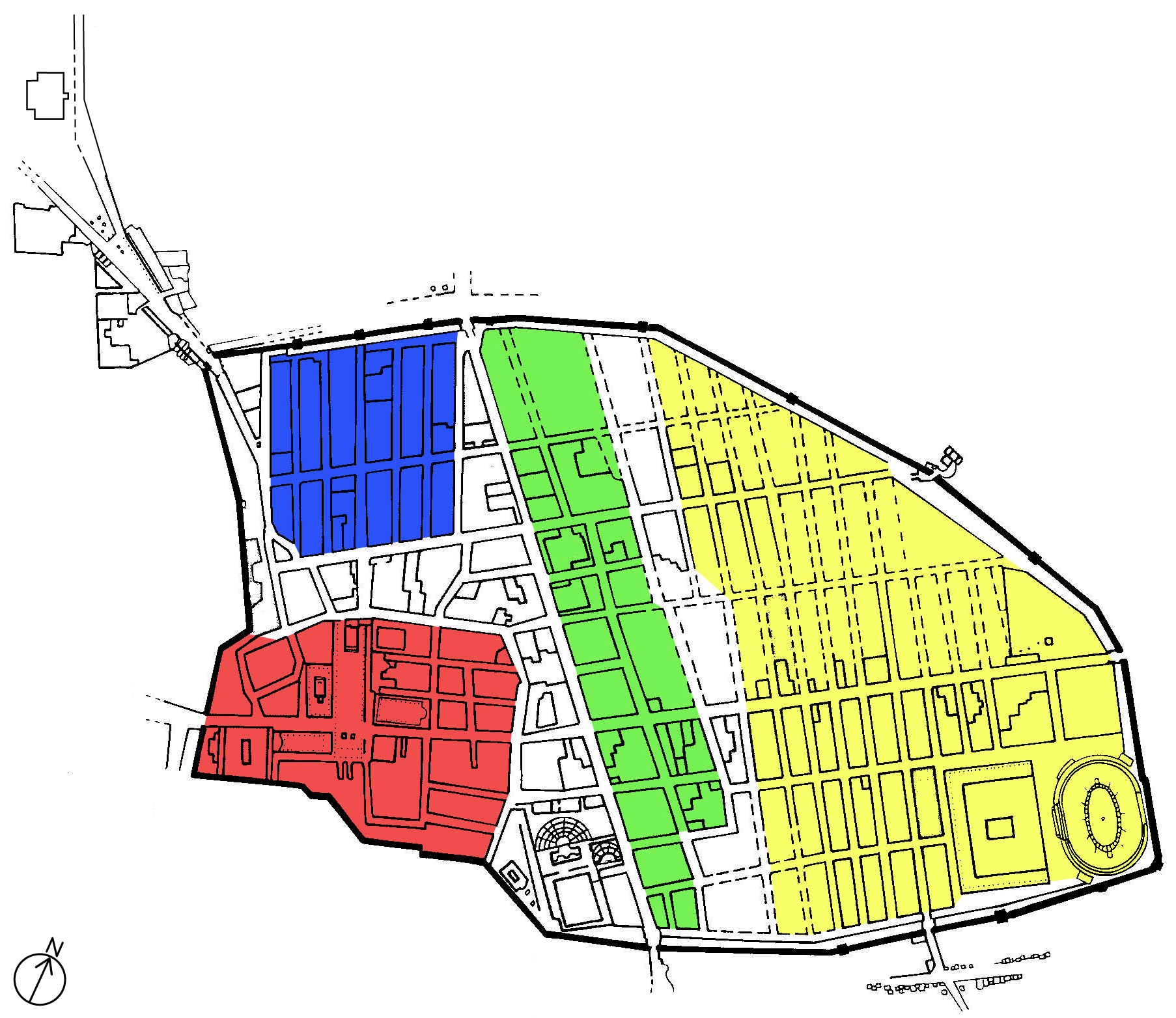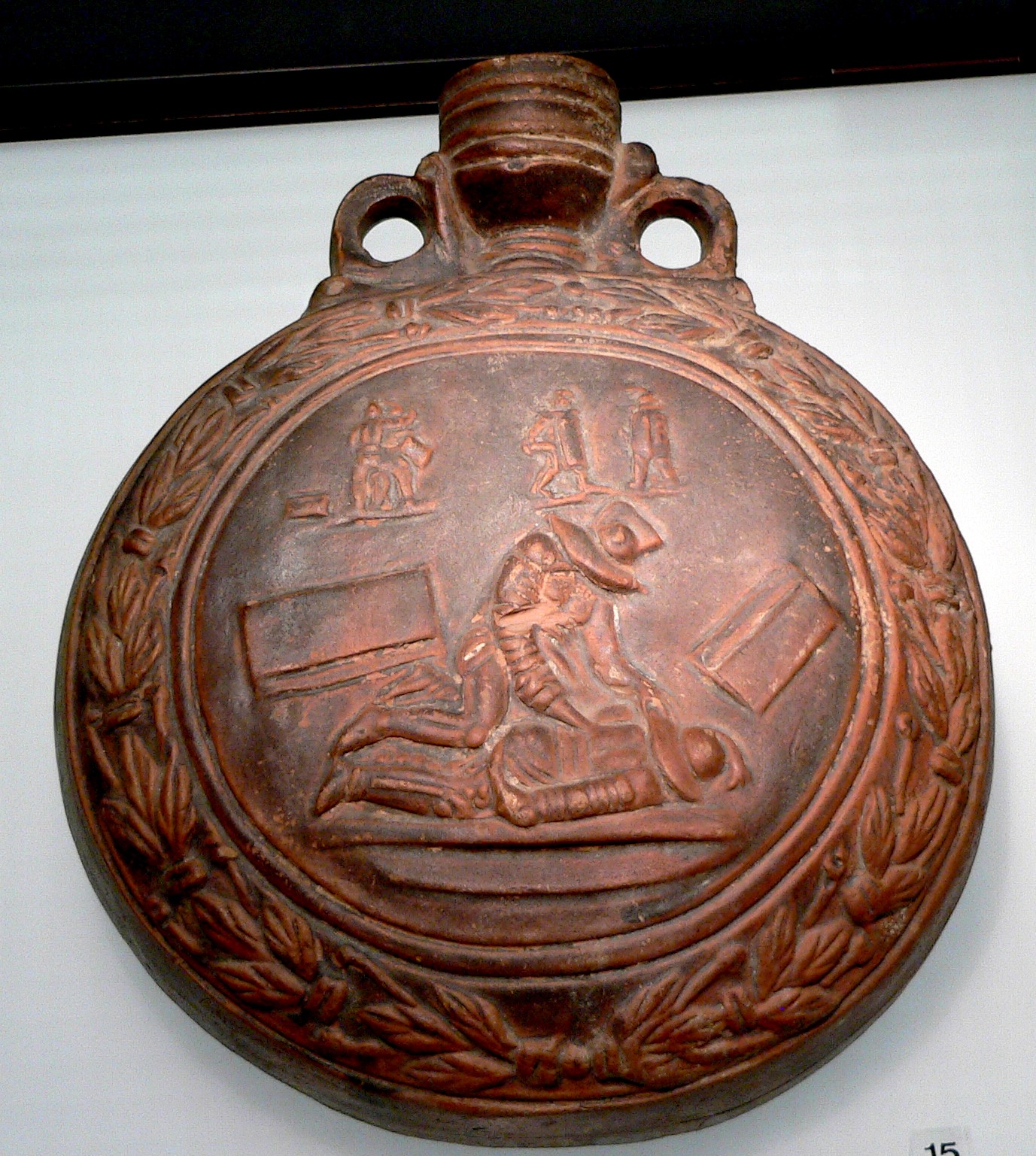|
Zliten Mosaic
The Zliten mosaic is a Roman floor mosaic from about the 2nd century AD, found in the town of Zliten in Libya, on the east coast of Leptis Magna. The mosaic was discovered by the Italian archaeologist Salvatore Aurigemma in 1913 and is now on display at The Archaeological Museum of Tripoli. It depicts gladiatorial contests, animal hunts, and scenes from everyday life. History The mosaic was discovered in October 1913, in the ruins of a seaside Roman villa later called Villa Dar Buk Ammera after the area where it was found. When it was first fully unearthed and visible after the excavations conducted by Salvatore Aurigemma, from 22 June to 18 August 1914, it was immediately seen as a masterpiece of mosaic art, but one that was in urgent need of preservation and restoration. In the 1920s, the mosaic was restored and placed on display at The Archaeological Museum of Tripoli. It moved with the museum to its new location in 1952 and is displayed prominently near the entrance hall. ... [...More Info...] [...Related Items...] OR: [Wikipedia] [Google] [Baidu] |
Mosaic
A mosaic () is a pattern or image made of small regular or irregular pieces of colored stone, glass or ceramic, held in place by plaster/Mortar (masonry), mortar, and covering a surface. Mosaics are often used as floor and wall decoration, and were particularly popular in the Ancient Rome, Ancient Roman world. Mosaic today includes not just murals and pavements, but also artwork, hobby crafts, and industrial and construction forms. Mosaics have a long history, starting in Mesopotamia in the 3rd millennium BC. Pebble mosaics were made in Tiryns in Mycenean civilisation, Mycenean Greece; mosaics with patterns and pictures became widespread in classical times, both in Ancient Greece and Ancient Rome. Early Christian basilicas from the 4th century onwards were decorated with wall and ceiling mosaics. Mosaic art flourished in the Byzantine Empire from the 6th to the 15th centuries; that tradition was adopted by the Norman dynasty, Norman Kingdom of Sicily in the 12th century, by th ... [...More Info...] [...Related Items...] OR: [Wikipedia] [Google] [Baidu] |
Garamantes
The Garamantes (; ) were ancient peoples, who may have descended from Berbers, Berber tribes, Toubous, Toubou tribes, and Saharan Pastoral period, pastoralists that settled in the Fezzan region by at least 1000 BC and established a civilization that flourished until its end in the late 7th century AD. The Garamantes first emerged as a major regional power in the mid-2nd century AD and established a kingdom that spanned roughly in the Fezzan region of southern Libya. Their growth and expansion was based on a complex and extensive qanat irrigation system (Berber: ''foggaras''), which supported a strong agricultural economy and a large population. They subsequently developed the first urban society in a List of deserts by area, major desert that was not centered on a river system; their largest town, Germa, Garama, had a population of around four thousand, with an additional six thousand living in surrounding suburban areas. At its pinnacle, the Garamantian kingdom established and ma ... [...More Info...] [...Related Items...] OR: [Wikipedia] [Google] [Baidu] |
Shield
A shield is a piece of personal armour held in the hand, which may or may not be strapped to the wrist or forearm. Shields are used to intercept specific attacks, whether from close-ranged weaponry like spears or long ranged projectiles such as arrows. They function as means of active blocks, as well as to provide passive protection by closing one or more lines of engagement during combat. Shields vary greatly in size and shape, ranging from large panels that protect the user's whole body to small models (such as the buckler) that were intended for hand-to-hand-combat use. Shields also vary a great deal in thickness; whereas some shields were made of relatively deep, absorbent, wooden planking to protect soldiers from the impact of spears and crossbow bolts, others were thinner and lighter and designed mainly for deflecting blade strikes (like the roromaraugi or qauata). Finally, shields vary greatly in shape, ranging in roundness to angularity, proportional length and wi ... [...More Info...] [...Related Items...] OR: [Wikipedia] [Google] [Baidu] |
Peltarion (shield)
A ''peltast'' (, ) was a type of light infantry originating in Thrace and Paeonia and named after the kind of shield he carried.Williams, Mary Frances. "Philopoemen's special forces: Peltasts and a new kind of greek light-armed warfare (Livy 35.27) " ''Historia: Zeitschrift Für Alte Geschichte'' H. 3 (2004): 257-277. mentions the Thracian peltasts, while in the Anabasis distinguishes the T ... [...More Info...] [...Related Items...] OR: [Wikipedia] [Google] [Baidu] |
Reggio Emilia
Reggio nell'Emilia (; ), usually referred to as Reggio Emilia, or simply Reggio by its inhabitants, and known until Unification of Italy, 1861 as Reggio di Lombardia, is a city in northern Italy, in the Emilia-Romagna region. It has about 172,518 inhabitants and is the main ''comune'' (municipality) of the province of Reggio Emilia.The inhabitants of Reggio nell'Emilia are called ''Reggiani'', while the inhabitants of Reggio di Calabria, in the southwest of the country, are called ''Reggini''. The old town has a hexagonal form, which derives from the ancient walls, and the main buildings are from the 16th–17th centuries. The commune's territory lies entirely on a plain, crossed by the Crostolo stream. History Ancient and early Middle Ages Reggio began as a historical site with the construction by Marcus Aemilius Lepidus (consul 187 BC), Marcus Aemilius Lepidus of the Via Aemilia, leading from Piacenza to Rimini (187 BC). Reggio became a judicial administration centre, with ... [...More Info...] [...Related Items...] OR: [Wikipedia] [Google] [Baidu] |
Nerva–Antonine Dynasty
The Nerva–Antonine dynasty comprised seven Roman emperors who ruled from AD 96 to 192: Nerva (96–98), Trajan (98–117), Hadrian (117–138), Antoninus Pius (138–161), Marcus Aurelius (161–180), Lucius Verus (161–169), and Commodus (177–192). The first five of these are commonly known as the "Five Good Emperors". The first five of the six successions within this dynasty were notable in that the reigning emperor did not have a male heir, and had to adopt the candidate of his choice to be his successor. Under Roman law, an adoption established a bond legally as strong as that of kinship. Because of this, all but the first and last of the Nerva–Antonine emperors are called Adoptive Emperors. The importance of official adoption in Roman society has often been considered a conscious repudiation of the principle of dynastic inheritance and has been deemed one of the factors of the period's prosperity. However, this was not a new practice. It was common for pat ... [...More Info...] [...Related Items...] OR: [Wikipedia] [Google] [Baidu] |
Trajan
Trajan ( ; born Marcus Ulpius Traianus, 18 September 53) was a Roman emperor from AD 98 to 117, remembered as the second of the Five Good Emperors of the Nerva–Antonine dynasty. He was a philanthropic ruler and a successful soldier-emperor who presided over one of the greatest military expansions in Roman history, during which, by the time of his death, the Roman Empire reached its maximum territorial extent. He was given the title of ('the best') by the Roman Senate. Trajan was born in the of Italica in the present-day Andalusian province of province of Seville, Seville in southern Spain, an Italic peoples, Italic settlement in Hispania Baetica; his came from the town of Todi, Tuder in the Regio VI Umbria, Umbria region of central Italy. His namesake father, Marcus Ulpius Traianus (father of Trajan), Marcus Ulpius Traianus, was a general and distinguished senator. Trajan rose to prominence during the reign of Domitian; in AD 89, serving as a in , he supported t ... [...More Info...] [...Related Items...] OR: [Wikipedia] [Google] [Baidu] |
Pompeii
Pompeii ( ; ) was a city in what is now the municipality of Pompei, near Naples, in the Campania region of Italy. Along with Herculaneum, Stabiae, and Villa Boscoreale, many surrounding villas, the city was buried under of volcanic ash and pumice in the eruption of Mount Vesuvius in 79 AD. Largely preserved under the ash, Pompeii offers a unique snapshot of Culture of ancient Rome, Roman life, frozen at the moment it was buried, as well as insight into ancient urban planning. It was a wealthy town of 10,000 to 20,000 residents at the time it was destroyed. It hosted many fine public buildings and luxurious private houses with lavish decorations, furnishings and artworks, which were the main attractions for early excavators; subsequent excavations have found hundreds of private homes and businesses reflecting various architectural styles and social classes, as well as numerous public buildings. Organic remains, including wooden objects and human bodies, were interred in the as ... [...More Info...] [...Related Items...] OR: [Wikipedia] [Google] [Baidu] |
Murmillo
The murmillo (also sometimes spelled "mirmillo", "myrmillo", or "mirmillones" pl. murmillones) was a type of gladiator during the Roman Empire, Roman Imperial age. The murmillo-class gladiator developed in the early Imperial period to replace the earlier List of Roman gladiator types , Gallus-type gladiator, named after the warriors of Gaul (). As the Gallia Cisalpina, Gauls inhabiting Italy had become well integrated with the Romans by the time of the reign (27 BCE to 14 CE) of Augustus, it became undesirable to portray them as enemy outsiders; the Gallus-class gladiator thus fell out of use. The designation originated with the Greek word μορμύρος () for a type of fish - murmillo gladiators could wear a Galea (helmet), Gallic-model helmet incorporating fish-imagery. Equipment and armaments The murmillo was armed with: *Gladius: Roman sword with a length of 64–81 cm and weight of 1.2-1.6 kg with a handle made of bone. *Scutum (shield), Scutum: ... [...More Info...] [...Related Items...] OR: [Wikipedia] [Google] [Baidu] |
Thraex
The Thraex (: Thraeces), or Thracian, was a type of Roman gladiator A gladiator ( , ) was an armed combatant who entertained audiences in the Roman Republic and Roman Empire in violent confrontations with other gladiators, wild animals, and condemned criminals. Some gladiators were volunteers who risked their ... armed in Thracians, Thracian style. His equipment included a ''Parma (shield), parmula'', a small shield (about 60 × 65 cm) that might be rectangular, square or circular; and a sica, a short sword with a curved blade like a small version of the Dacian falx, intended to maim an opponent's unarmoured back. His other armour included greaves, a protective belt above a loincloth, and a helmet with a side plume, visor and high crest. Fighting style and techniques A passage in Petronius indicates that "Thracian" was a style of gladiatorial fighting taught in training schools. An inscription records a ''doctor thraecum'', a teacher of would-be Thracians. See also ... [...More Info...] [...Related Items...] OR: [Wikipedia] [Google] [Baidu] |
Tunic
A tunic is a garment for the torso, usually simple in style, reaching from the shoulders to a length somewhere between the hips and the ankles. It might have arm-sleeves, either short or full-length. Most forms have no fastenings. The name derives from the Latin '' tunica'', the basic garment worn by both men and women in Ancient Rome, which in turn was based on earlier Greek garments that covered wearers' waists. The term is likely borrowed from a Semitic word *''kittan'' with metathesis. The word khiton () is of the same origin. Ancient era Roman tunic The Roman ''tunica'' was adopted by Roman citizens in the 3rd century BCE. It was often worn by Roman citizens and by non-citizens alike. However, citizens might wear it under the toga, especially at formal occasions. The length of the garment, the presence or lack of stripes, as well as their width and ornamentation, would indicate the wearer's status in Roman society. Roman senators, for example, used the '' laticla ... [...More Info...] [...Related Items...] OR: [Wikipedia] [Google] [Baidu] |







